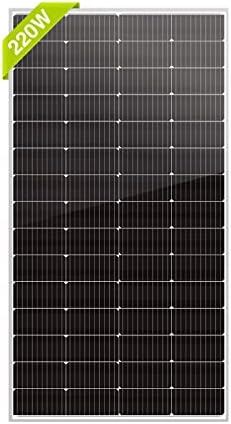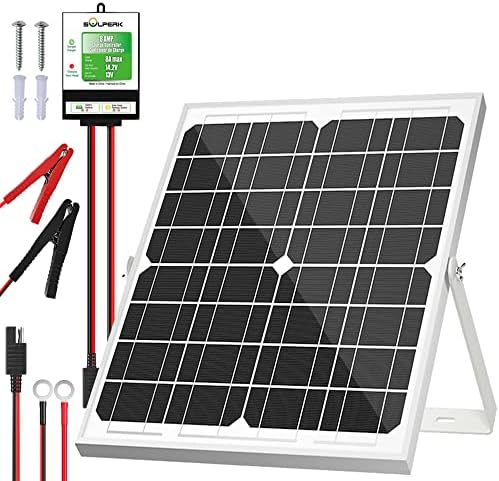# Solar Panel Guide: What Type is Right for Your Energy Needs?
Picture this: it’s a warm morning, the sun is rising over the horizon, and the gentle hum of nature is your alarm clock. You step outside to feel that invigorating breeze, knowing that your cozy, self-sustaining home is powered by the very rays illuminating the sky. That’s the magic of solar energy—turning sunlight into a renewable source of power that keeps your world buzzing. But let’s face it; with various types of solar panels available, choosing the right one can feel like looking at a menu in a foreign restaurant. So, grab a comfy chair, let’s embark on this sunny journey together, and uncover which solar panel will keep your lifestyle bright and efficient!
## The Basics of Solar Panels
Before diving into the nitty-gritty of different types of solar panels, let’s review how they convert sunlight into usable electricity. Solar panels work primarily through a process called photovoltaic conversion. Simple enough, right? Essentially, solar cells made of semiconductor materials (typically silicon) convert sunlight into direct current (DC) electricity. An inverter then transforms this DC into alternating current (AC), which powers your home.
Understanding the basic principle helps you appreciate the options available and makes the selection process less daunting. Let’s break down the main types of solar panels you might consider for your energy needs.
## The Three Major Types of Solar Panels
### 1. Monocrystalline Solar Panels
**What They Are:** Monocrystalline panels are created from a single crystal structure. This results in high efficiency and longevity—perfect for those with limited roof space!
**Pros:**
– **High Efficiency:** Typically over 15-20% efficiency, making them highly effective.
– **Space Efficient:** Ideal for small roofs because they generate more power per square foot.
– **Long Lifespan:** With warranties extending up to 25 years, they provide long-term value.
**Cons:**
– **Higher Cost:** They tend to be pricier due to manufacturing processes.
– **Heat Sensitivity:** Efficiency can drop in high temperatures unless well ventilated.
### 2. Polycrystalline Solar Panels
**What They Are:** Made from multiple crystal structures, polycrystalline panels are less expensive but also slightly less efficient than their monocrystalline counterparts.
**Pros:**
– **Cost-Effective:** Generally cheaper to manufacture, making them a popular choice for budget-conscious homeowners.
– **Lower Waste:** The manufacturing process has less silicon waste compared to monocrystalline options.
**Cons:**
– **Lower Efficiency:** Typically 13-16% efficient on average.
– **Space Requirements:** You may need more rooftop space to achieve your energy needs.
### 3. Thin-Film Solar Panels
**What They Are:** These panels are lightweight and made from layers of photovoltaic material. They are flexible and can be applied to various surfaces.
**Pros:**
– **Lightweight and Flexible:** Perfect for unconventional locations or surfaces.
– **Better Performance in Low Light:** They can still generate power in low-light conditions such as cloudy days.
– **Affordability:** They can be less expensive upfront, although they may require more space.
**Cons:**
– **Lower Efficiency:** Typically offers less efficiency (10-12%) than crystalline options.
– **Shorter Lifespan:** Generally have shorter warranties and lifespans compared to crystalline panels.
### Which Type is Right for You?
Selecting the ideal solar panel largely depends on your specific energy needs, budget, and the available installation area. Here are some questions to ponder as you make your choice:
– **How much energy do you consume?** Calculate your average energy usage to establish how many panels you will need.
– **What is your budget?** While monocrystalline panels are more efficient, they can also strain your wallet. Assess your financial parameters and explore available incentives.
– **How much space do you have?** If space is limited, higher efficiency panels make sense. Otherwise, cheaper options could fill your roof well.
## Factors Beyond Panel Types
### Efficiency Rating
When selecting solar panels, look closely at their efficiency ratings. While more efficient panels mean more electricity generation, they might not always be necessary for your energy consumption needs.
### Durability and Warranty
A solar panel installation is a long-term investment. Look for panels that come with solid warranties—often around 25 years—this is a good indicator of durability and the manufacturer’s confidence in their product.
### Installation and Maintenance
How simple is it to install the panels? Some types may require intricate mounting systems. In addition, inquire about maintenance needs—some higher-efficiency options require more technical upkeep.
## Pro Tips for Choosing Solar Panels
– **Read Reviews:** Spend time researching reputable brands and read customer stories to gauge real-world performance and customer service.
– **Get Multiple Quotes:** Consult with several solar providers. They can provide valuable insight into which panel type fits best for your unique situation.
– **Consider Incentives:** Federal and state incentives can dramatically reduce the cost of solar panel installation. Research available rebates and tax credits.
– **Monitor Your Energy Usage:** Make sure to understand your energy habits. Energy-efficient appliances can help you get by with fewer panels.
## Conclusion: Sun-Bathed Choices
At the end of the day, the quest to find the right solar panel boils down to your energy needs, budget, and the space you have for installation. Whether you choose high-efficiency monocrystalline panels, budget-friendly polycrystalline, or lightweight thin-film options, these solar solutions can lead you into a brighter, more sustainable lifestyle. It’s an exciting venture into clean energy that’s not just good for your wallet, but also fabulous for our planet.
As you navigate your choices, keep in mind the potential for a sun-kissed future where your home is powered by the very rays that bring life to our Earth. So, raise a toast to solar energy—here’s to harnessing the sunshine and embracing a sustainable tomorrow!



